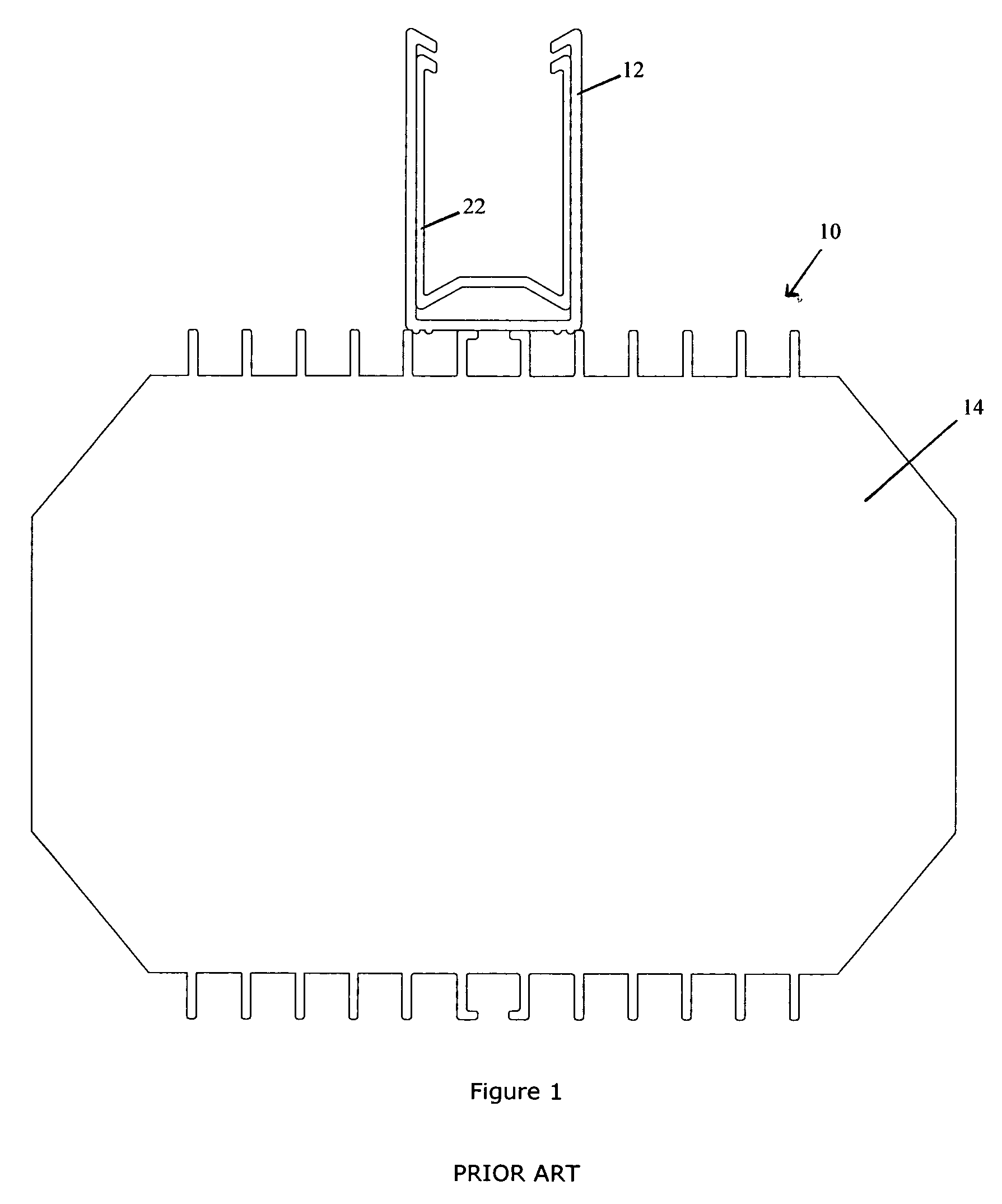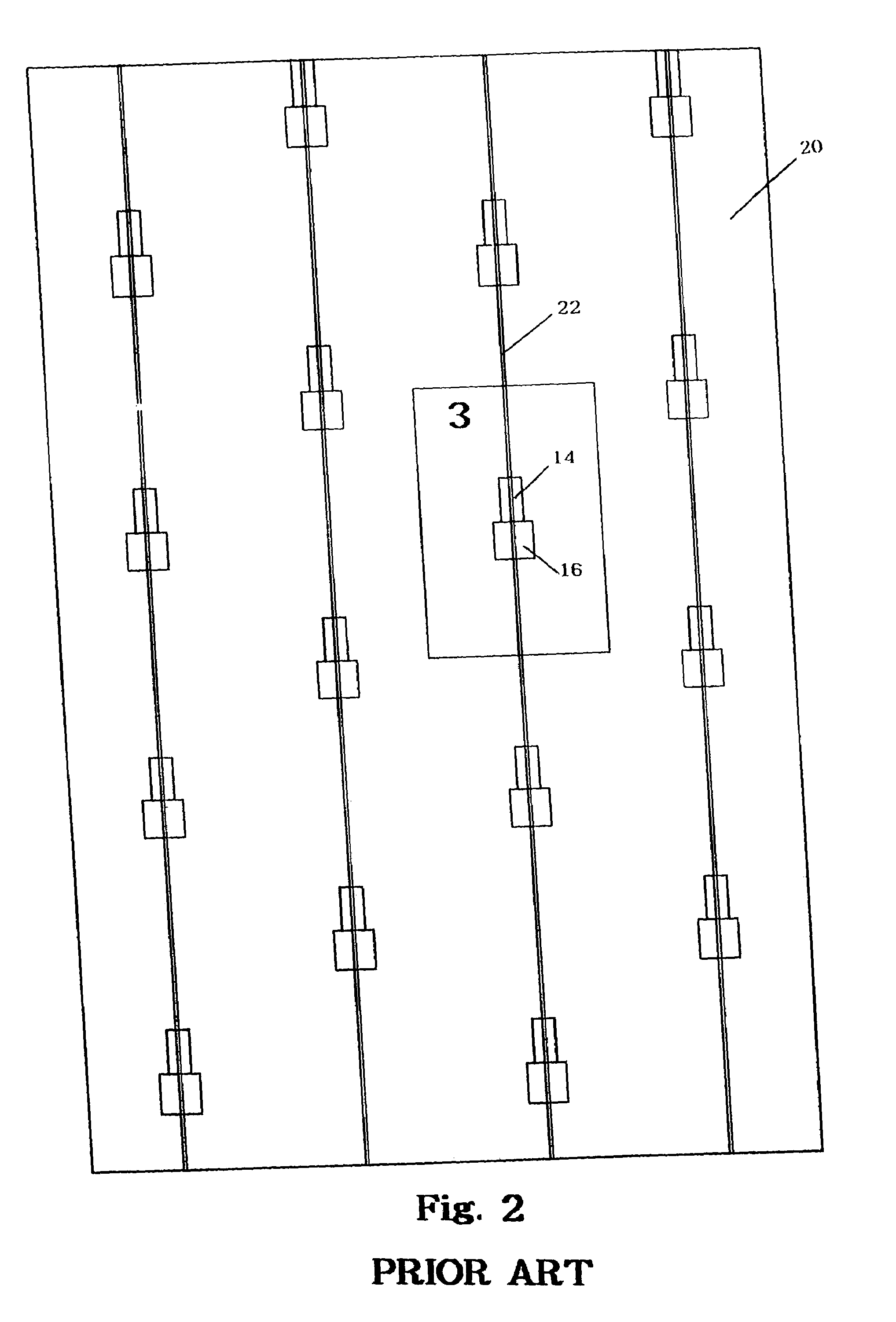Method and apparatus for irradiation of plants using light emitting diodes
- Summary
- Abstract
- Description
- Claims
- Application Information
AI Technical Summary
Benefits of technology
Problems solved by technology
Method used
Image
Examples
Embodiment Construction
[0033]Plants grow due to photosynthesis. Plants use water, carbon dioxide and light to create energy and oxygen. Different wavelengths of light affect plants differently. Most plants reflect green light. Thus, the best light for most plant growth is in the red and blue wavelengths. Red light tends to make plants grow tall. Blue light tends to make plants with strong stems. As can be seen in FIG. 13, photosynthesis is maximized at about 440 nm and about 680 nm. In contrast, humans see best if the light is between about 500 and 650 nm. FIG. 13 also shows the phototropic curve. This shows the wavelengths of light that humans see best.
[0034]The maximum transmission of blue light occurs about midday. Because of the angle of the sun, the high-energy blue light tends to be reflected off the ozone layer in the morning and evening. Thus, there is less blue in the light. Similarly, there is less blue light in the winter because the earth is at an angle to the sun. In the winter about 50% of t...
PUM
 Login to View More
Login to View More Abstract
Description
Claims
Application Information
 Login to View More
Login to View More - R&D
- Intellectual Property
- Life Sciences
- Materials
- Tech Scout
- Unparalleled Data Quality
- Higher Quality Content
- 60% Fewer Hallucinations
Browse by: Latest US Patents, China's latest patents, Technical Efficacy Thesaurus, Application Domain, Technology Topic, Popular Technical Reports.
© 2025 PatSnap. All rights reserved.Legal|Privacy policy|Modern Slavery Act Transparency Statement|Sitemap|About US| Contact US: help@patsnap.com



